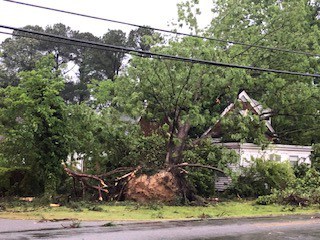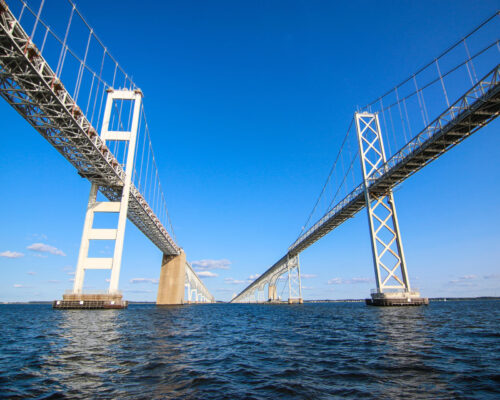By Karl Blankenship, Bay Journal News Service
Governors from Chesapeake Bay watershed states are urging Congress to spend an additional billion dollars on Bay restoration efforts.
Their letter to leaders of the U.S. House and Senate, dated May 13, urged federal support for a “bold plan” that would boost state and local economies while helping to “achieve the long-elusive goal of restoring the Chesapeake Bay.”
The request was announced on Twitter by Virginia Gov. Ralph Northam. “Today, I joined our Chesapeake Bay watershed partners in calling on Congressional leaders to make bold investments in Bay restoration,” he wrote. “Our Billion for the Bay Initiative will create jobs, stimulate economic growth, and protect the health of America’s largest estuary.”
The two-page letter provides little detail about how the money would be used or how many years the billion dollars would be spread across.
Northam chairs the Chesapeake Bay Executive Council, the top policymaking body that has guided Bay restoration efforts since 1983. The council includes the governors of all six states in the watershed—Virginia, Maryland, Pennsylvania, New York, Delaware and West Virginia—as well as the mayor of the District of Columbia; the administrator of the U.S. Environmental Protection Agency; and the chair of the Chesapeake Bay Commission, which represents state legislatures.
All members of the council signed the letter except for the EPA administrator, who is barred from signing onto congressional funding requests.
The letter said the additional money would provide a “significant and much needed infusion of new funds that will jumpstart the final phase of Bay restoration and put people to work building clean water infrastructure, including green infrastructure that will reduce stormwater and agricultural water pollution, the restoration of natural landscapes, and helping us adapt to the impacts of climate change.”
The letter notes that the region faces a 2025 deadline to implement all pollution control measures needed to clean up the Bay, which would require ramped up efforts to control agricultural runoff, manage stormwater, protect forests, create wetlands and other actions that would help restore the health of the Bay and its 64,000-square-mile watershed.
The letter notes that “the lion’s share” of the fiscal responsibilities for Bay restoration rests with the states, but that their budgets have been hard hit during the COVID-19 pandemic. Also, “many individuals, including farmers and ratepayers who must share in the cost of these upgrades, are also struggling,” the letter stated.
The letter said the additional funding would enhance cleanup efforts that are significantly behind schedule and boost economic activity, generating “tens of thousands” of jobs.
The letter provides no detail about whether the additional money would be steered strictly toward water quality-related projects or whether it could also be used for related Bay initiatives such as oyster restoration and land conservation.
But Bay supporters say the infusion of money is critical.
“For me, the letter signed by every governor in the watershed, and the chair of the commission, clearly indicates that new and substantial federal resources will be needed to deliver clean water to the Chesapeake Bay,” said Ann Swanson, executive director of the Chesapeake Bay Commission.
In a statement, Chesapeake Bay Foundation President William Baker praised the initiative, saying “the future of the Chesapeake Bay is now in jeopardy” and efforts to restore it must be accelerated. He said the majority of the new funding should be directed toward Pennsylvania, which generates the greatest amount of water-fouling nutrients sent to the Bay and is the furthest behind in meeting cleanup goals.
At the same time, Baker said the EPA must “hold the states accountable”—especially Pennsylvania, whose cleanup plan only achieves 75% of the state’s nutrient reduction goal and identifies a funding shortfall of more than $300 million a year.
Joel Dunn, president of the Chesapeake Conservancy, said the funds were urgently needed and would “dramatically reduce pollution, create jobs, protect nature and help prepare Bay communities for the challenges of climate change.”
“Communities throughout the Chesapeake Bay and its tributaries rely on the Bay for fishing, for tourism, and for outdoor recreation,” he said. “A healthy and restored Chesapeake Bay is paramount for the future economic well-being of these communities and for the health of the 18 million people who live in the watershed.”
According to a report submitted to Congress last fall, federal agencies spent about $505 million on Bay-related programs during the fiscal year that ended last Sept. 30.




